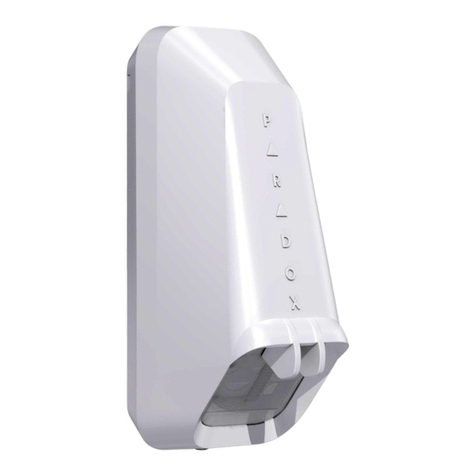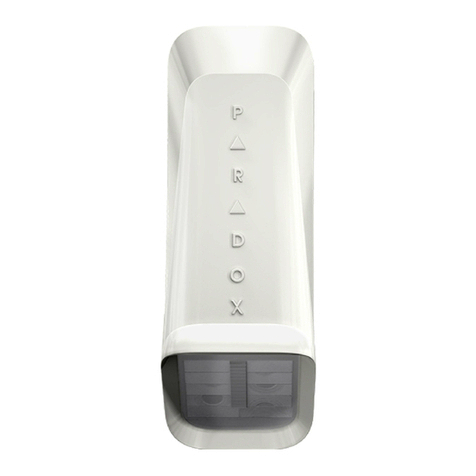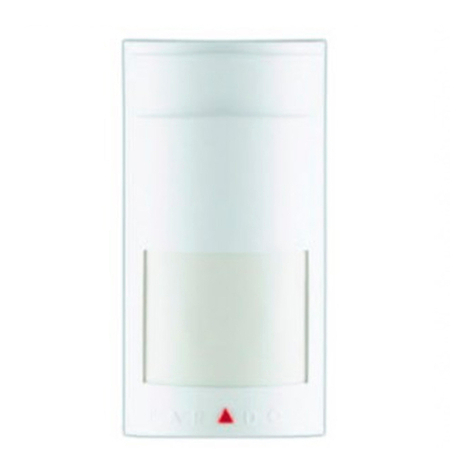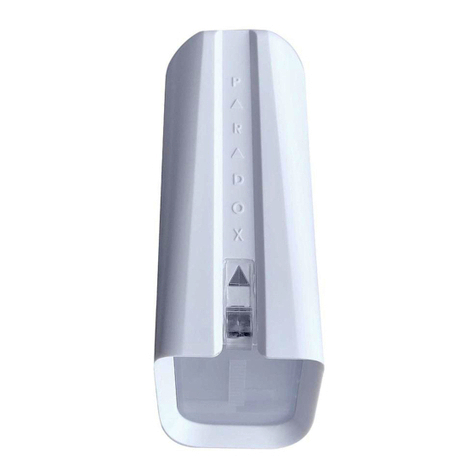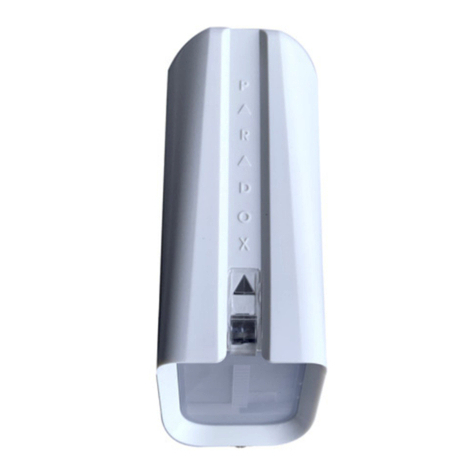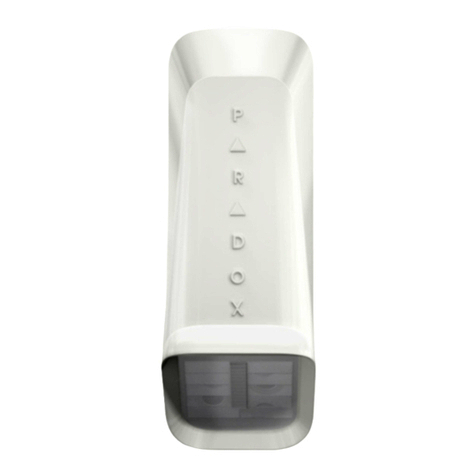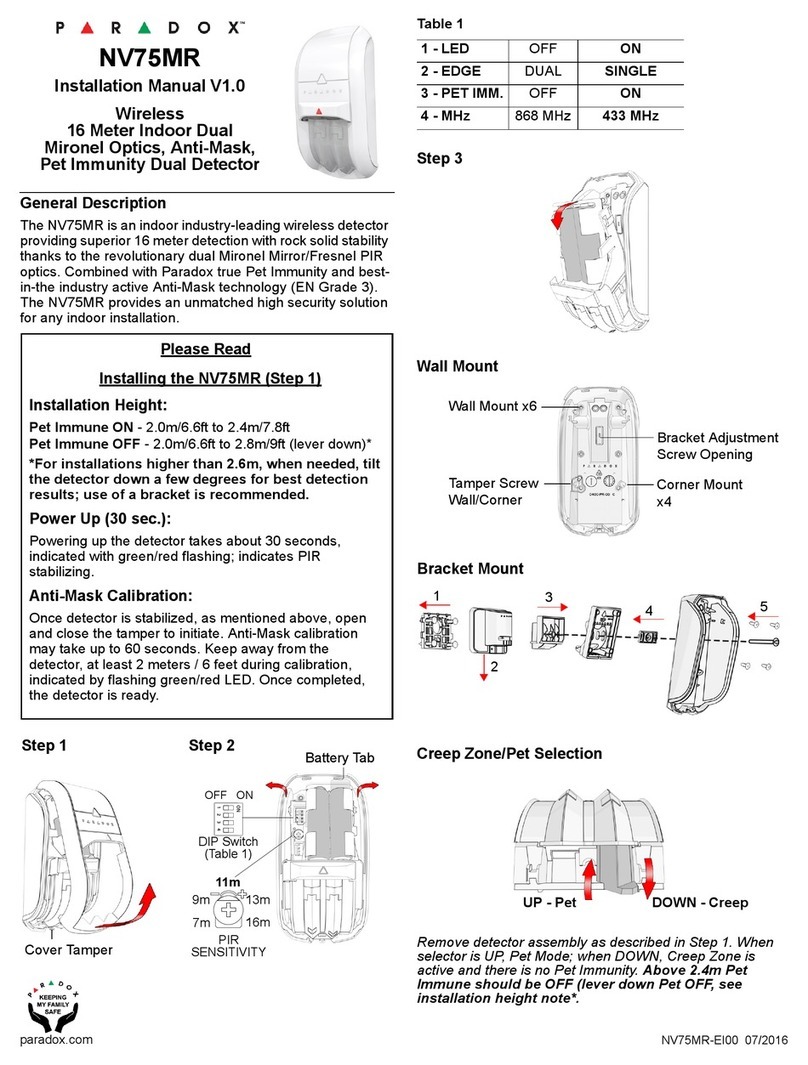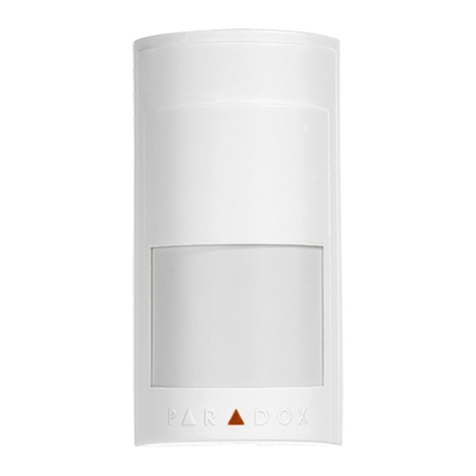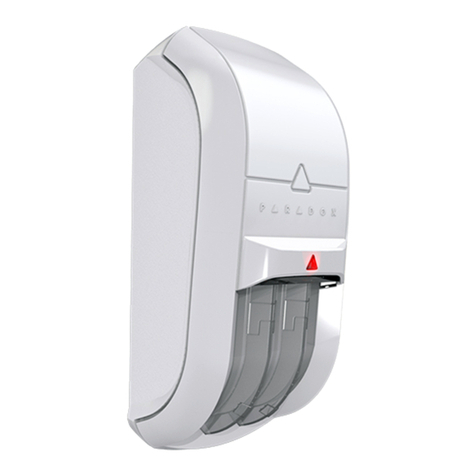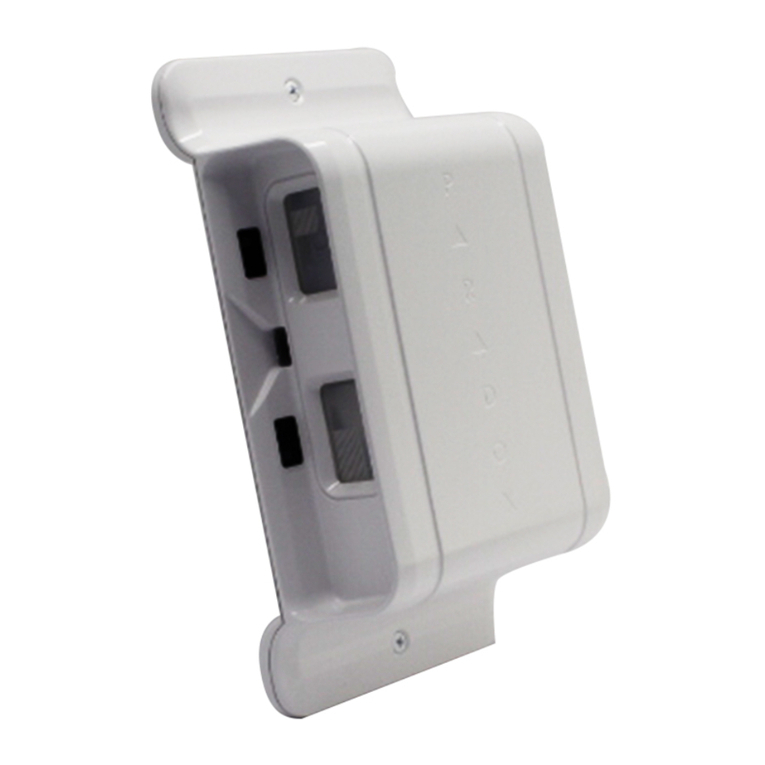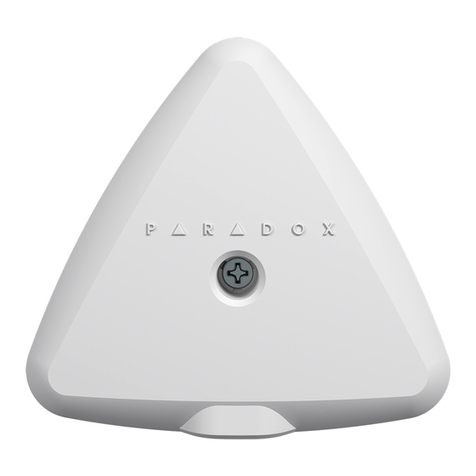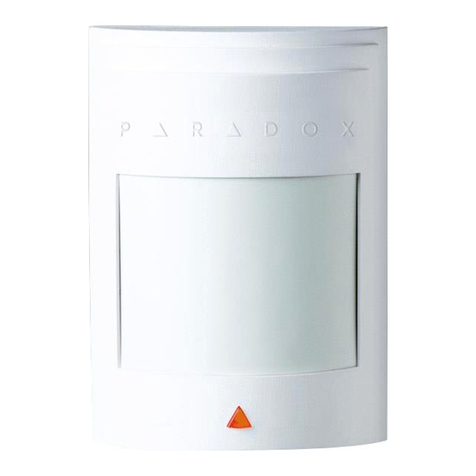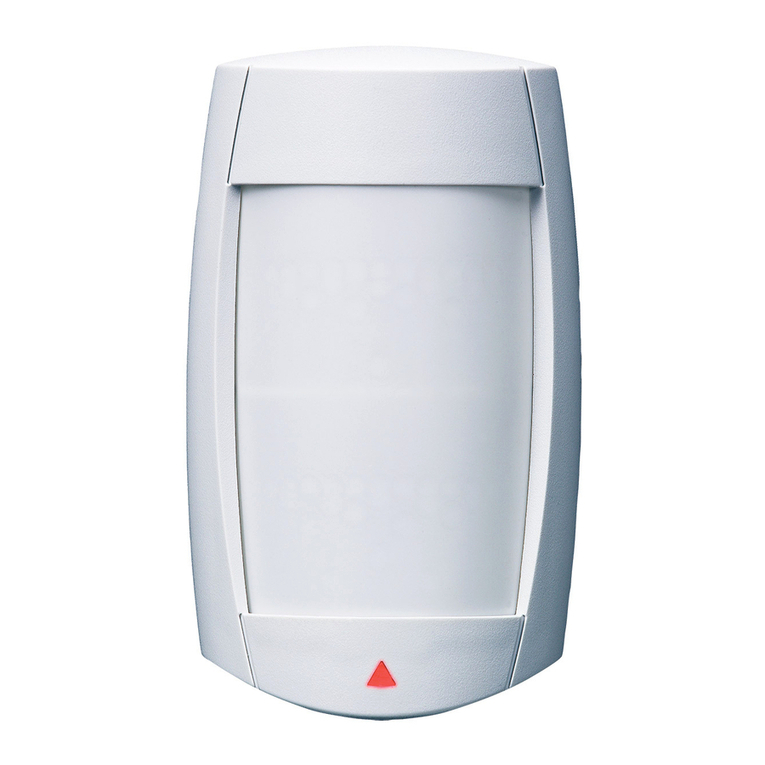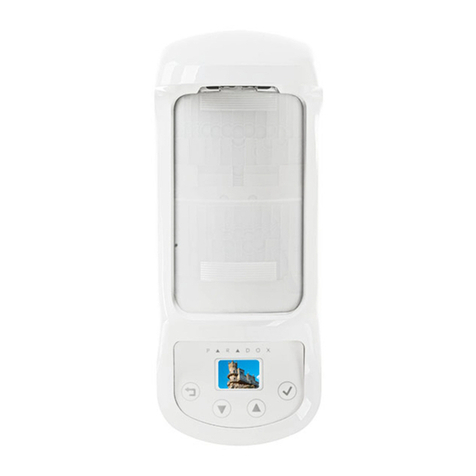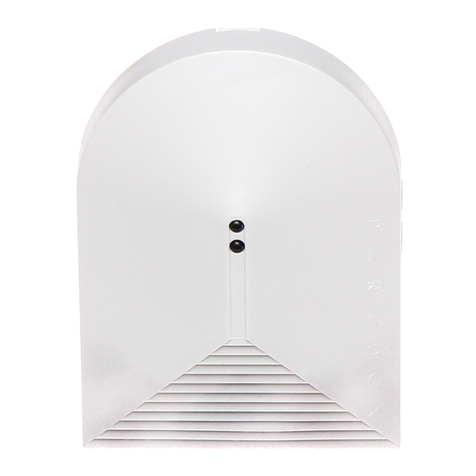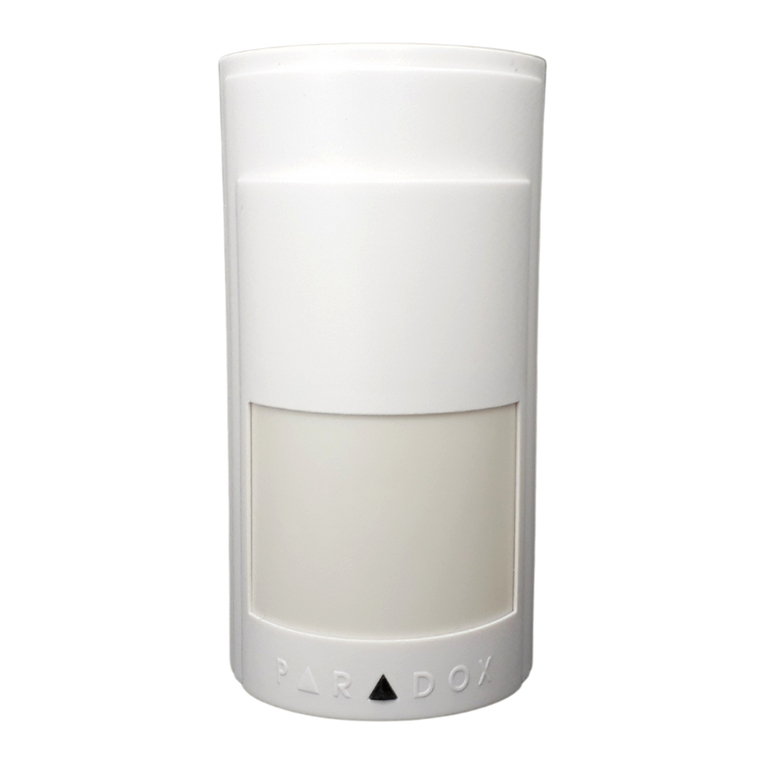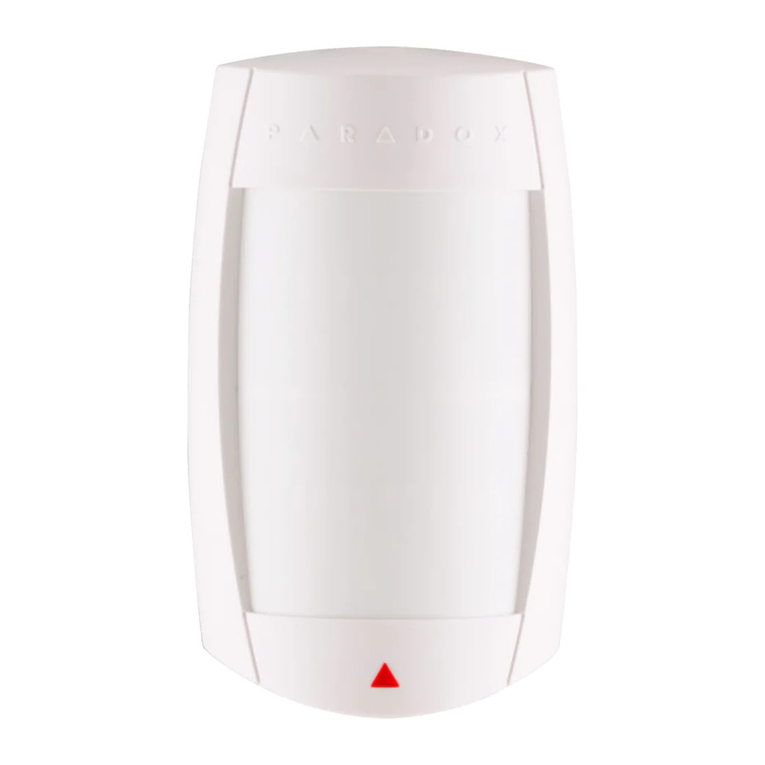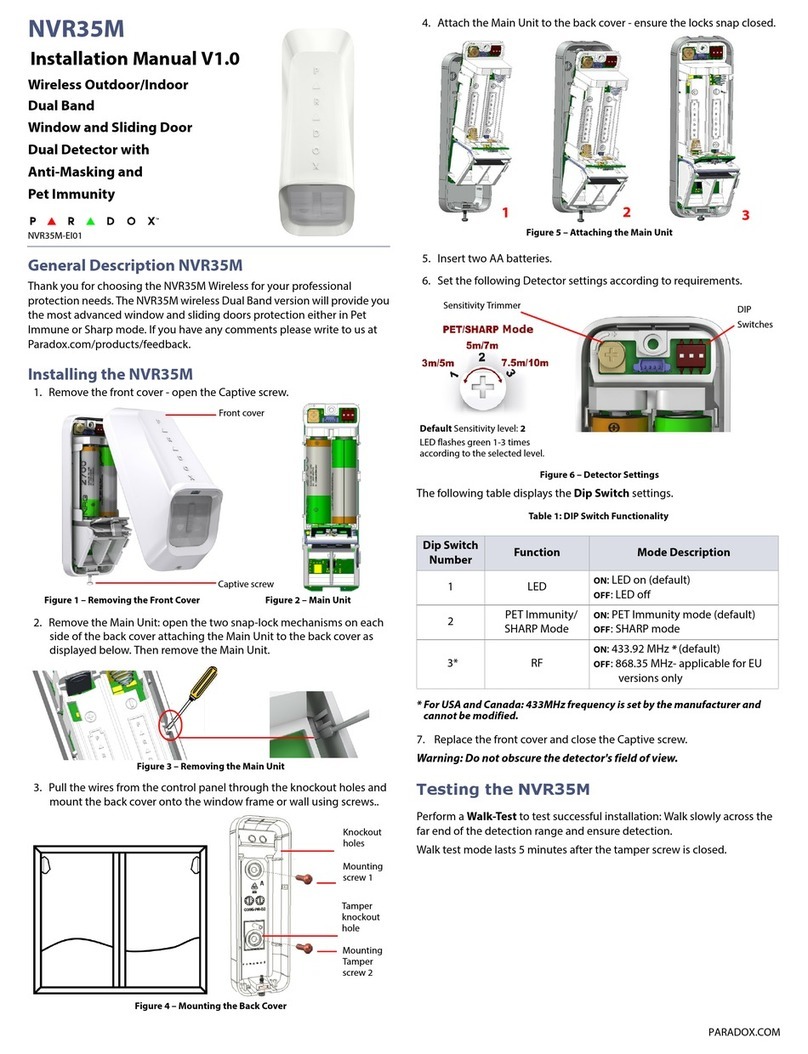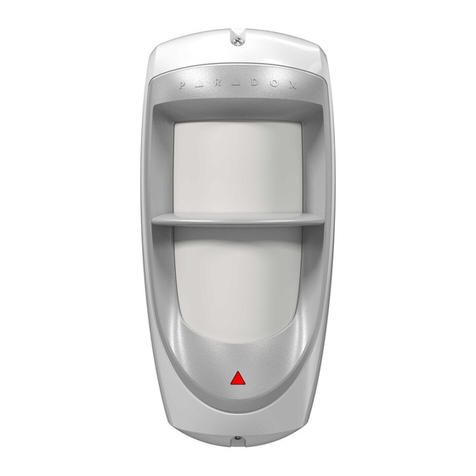PMD85-EI11 - Printed in Canada 06/2011
PMD85: Outdoor Digital Dual-Optic High-Performance PIR V2.4
Description
The PMD85 Outdoor Digital Dual-Optic High-
Performance PIR overcomes the
environmental challenges of the outdoors
while giving you the same reliability as a high-
performance indoor motion detector by
combining a special weatherproof design with
the proven technology of Paradox’s patented
digital detection.
The PMD85 also features patented animal immunity, which by way
of two sensors, allows the unit to identify humans while ignoring
animals weighing up to 40kg (90lbs.).
Features
•Impactandtemperatureresistantcasing(linedwithan
injected rubber gasket)
•UVprotectedlens
•DualOpticalFilteringSystem
•Multi-levelsensitivity adjustment
•PatentedDigitalMotionDetection
•DigitalDualOpposedDetection
•Alivesoftware(alarmLEDcontinuestodisplaywhenPIRisin
energy save mode without compromising battery life)
•3-minuteEnergySavemodeaftertwodetectionswithina
five-minute period
Installation
There are three different mounting methods that can be
used for the PMD85, they include corner-mount, flat
surface mount, or swivel-mount using the SB85. When
installing the PMD85, avoid placing the detector within
proximity of sources of interference such as direct
sunlight, reflective surfaces and moving cars. To install the
PMD85:
1) Select the detector’s location.
2) Remove the front cover screws holding the cover into
place; open the cover.
3) Loosen the screw holding the PCB into place and
gently slide and lift from back cover.
4) Drill or punch out the selected knockout holes from
the PMD85 back cover as shown in Figure 1 and secure
to surface using appropriate mounting screws.
Note: The PMD85 can also be mounted using the Paradox
Heavy Duty Swivel Mount Bracket (SB85). The swivel
mount may allow for easier mounting. If using the swivel
mount, it is recommended that you seal the space where
the swivel mount is connected to the back cover with
some silicon or with a rubber gasket to ensure that
moisture does not enter the detector.
After you have installed the detector, ensure that the
adjustable height markings on the upper right of the PCB’s
cover inside the unit match the installation height (see
Figure 2). Any PCB adjustments should be followed by a
walk-test to verify detector coverage.
WARNING: 1. Do not touch the sensor surface as this
could result in a detector malfunction. If necessary, clean
the sensor surface using a soft cloth with pure alcohol.
2. Ensure that the unit’s front and back cover are tightly
joined together without any spacing (around the rim of
the unit) before tightening the screw, otherwise the
weatherproof casing may be compromised and moisture
may enter the unit.
Figure 1: Installation
Turning on the PMD85
1) Insert three “AA” batteries into the battery holder while
verifying polarity (see Figure 3).
2) Insert the battery holder into the back cover and affix the
battery cable to the battery connector on the PCB. See below
for a description of the PMD85’s startup sequence.
Startup Sequence
After connecting the battery cable, a power-up sequence will
begin. During this time, the detector will not detect an open zone
or tamper. The startup sequence is as follows:
1) The LED flashes four times.
2) The LED flashes fast to indicate RF communication.
3) If cover is open: LED flashes to indicate trimpot sensitivity level -
e.g., if unit is set at default level 3, the LED flashes three times
(see Figure 2, G- Sensitivity Trimpot). The LED will continue to
indicate the sensitivity level for two minutes.
If cover is closed: End of startup sequence. The unit is ready for
operation.
Replacing the Batteries
1) Disconnect the battery cable from the battery connector of
the PCB.
2) Remove the battery holder from the back cover and remove
the old batteries.
3) Press and release the tamper switch to ensure that the unit has
powered down.
4) Follow the steps outlined in “Turning on the PMD85 “above.
RF Signal Strength Test
In order to verify the receiver’s reception of the motion detector’s
signal, perform a signal strength test before finalizing the
installation of the PMD85. Prior to performing the test, make sure
that the batteries have been inserted into the battery holder to
power the detector. Also verify that the motion detector has been
assigned to a zone. For more information on signal strength tests
and zone programming, refer to the appropriate security panel /
wireless receiver’s Reference & Installation Manual. If the
transmission is weak, just moving the detector by a few inches can
greatly improve the reception. If the signal is still weak, it is
recommended that the detector be moved to another location.
Walk-testing
To put the d etecto r into Walk-te st Mode, o pen and c lose th e cover.
At 20°C (68°F), with the detector at the highest sensitivity setting,
in Single Edge Processing mode, and with APSP set to Normal you
should not be able to cross more than one complete zone
(consisting of 2 beams, left and right sensor detecting elements) in
the coverage area of up to 35 feet, with any kind of movement;
slow/fast walking or running.
You can a djus t the sensit ivit y leve l usin g the tr impot. Five trimp ot
gain levels provide fine gain tuning with steps of 10%. The level
can be adjusted between a minimum gain of 50% and maximum
gain of 100%. The approximate width of a full beam at 11m (35ft)
from the detector is 1.8m (6ft).
Note: 1.When walk-testing, always move across the detection
path, not toward the detector. 2.After a power up, the detector
will automatically enter Walk-Test mode for three minutes.
Alive Software
If the motion detector transmits two alarm signals (LED on for 4
seconds) within a five minute period, the detector will fall into
Energy Save mode where the detector will not transmit any alarm
signals for approximately 3 minutes. Due to the motion detector’s
Alive software, the red LED continues to flash to indicate a
detection even when in Energy Save mode. Once the three-minute
Energy Save mode ends, the detector will return to normal
operation.
Note: If the detector’s cover is removed and then replaced while in
Energy Save mode, the first detection will trigger an alarm signal.
